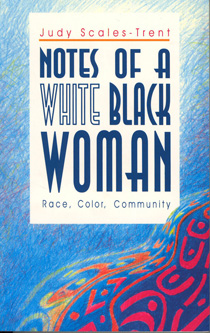“This damned business of colour”: Passing in African American novels and memoirsPosted in Dissertations, Literary/Artistic Criticism, Media Archive, Passing, United States on 2012-04-24 03:26Z by Steven |
“This damned business of colour”: Passing in African American novels and memoirs
Lehigh University
2005-04-28
230 pages
Publication Number: AAT 3167071
ISBN: 9780542026218
Irina C. Negrea
Presented to the Graduate and Research Committee of Lehigh University in Candidacy for the Degree of Doctor of Philosophy in English
The topic of this dissertation is an analysis of racial passing, as depicted in the novels The House Behind the Cedars by Charles Chesnutt, The Autobiography of an Ex-Colored Man, by James Weldon Johnson, and Passing by Nella Larsen, as well as in the memoirs The Sweeter the Juice by Shirlee Taylor Haizlip, Notes of a White Black Woman by Judy Scales-Trent, and Life on the Color Line by Gregory Williams.
Starting from the premise that passing is a complex phenomenon that reinforces and subverts the racial system simultaneously, this dissertation focuses on the subversive side of passing that comes to light especially when the passer is found out—a side that becomes obvious in the reactions it provokes in white racists: horror, fear, disgust, and insecurity.
One other new element that this dissertation brings into the field is a classification of passing that can be used as a tool for the analysis of similar literary works. The majority of passers fall into one of two categories: identificatory and performative. Identificatory passing is predicated on the passer’s identification with the white ideology. It is permanent, and the passer breaks all ties with his/her African American ancestry. At the other end of the spectrum is performative passing, based on the view of race as performance—a matter of props, makeup, and/or behavior. The passer crosses the color line and “acts” white, but in most cases, s/he does not break his/her ties with his/her African American roots and community. Rather, the performative passer tries to acknowledge both his/her racial identities, refusing to be boxed in one narrow racial category. These types of passing do not exist in a “pure” state; there are characters who start as performers of race and end up identifying with whiteness, for example, but the two basic types exist, in one combination or another, in all the stories of passing ever written. These two different types of passing engender different types of subversion of the racial system, and they are discussed as well in this dissertation.
Table of Contents
- Chapter I: “Gone Over on the Other Side:” Charles Chesnutt’s The House Behind the Cedars
- Chapter II: “They Wouldn’t Know you from White:” The Autobiography of an Ex-Colored Man
- Chapter III: “They Always Come Back:” Nella Larsen’s Passing
- Chapter IV: The Family’s “Heart of Darkness:” Passing in African American Memoirs
- Bibliography
Purchase the dissertation here.

